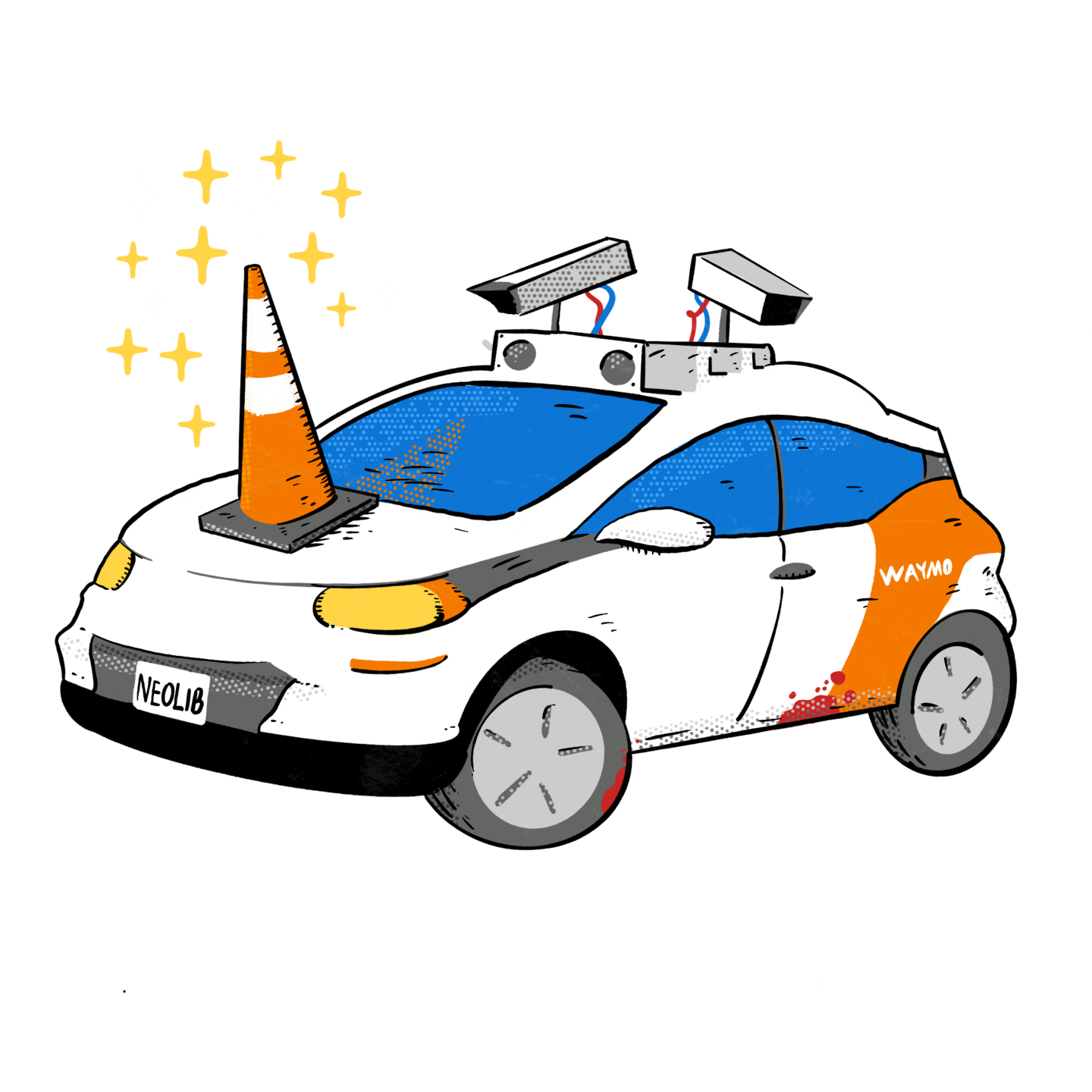
Bloomberg Opinion – Musk Loses Autonomy in Race for Tesla Robotaxis
Driverless vehicles will advance only as quickly as society — and cautious bureaucrats — can tolerate.
See original opinion article by Liam Denning at Bloomberg
No one values autonomy more than Elon Musk. Except, perhaps, other Tesla Inc. bulls. For example, RBC Capital Markets’ base case valuation for Tesla is just over $1 trillion — roughly double the current valuation — of which less than 6% relates to the manufacture and sale of electric vehicles. Some $627 billion of it relates to “robotaxis” — a figure bigger than the entire current market cap. There’s a reason that Musk, the chief executive, routinely prods investors to view Tesla not as a carmaker but as an artificial intelligence pioneer. Its next big event is a “robotaxi unveil” scheduled for August 8.
Yet in pivoting wholeheartedly to autonomy, Musk may actually be constraining his own — and, by extension, the boundless theorizing that buoys Tesla’s stock.
There was a time when selling EVs was considered exciting enough to propel Tesla’s stock higher. Competition and slowing growth have put paid to that, it seems.
The Rise Of The Others
Sales of electric vehicles by Tesla and competitors in major markets, trailing four quarters

Selling EVs is relatively straightforward. We’ve had a century or more to get used to the idea of people operating vehicles, often at high speed, with minimal training (how fondly I recall all 10 minutes of my New York State driving test). Without taking away from Tesla’s achievement in bringing EVs into the mainstream, that mainstream could easily accommodate new vehicles whose only big difference was the resort to a plug instead of a nozzle. EVs remain subject to the constraints of regulations and public opinion, but, by and large, those aren’t any different from those pertaining to traditional vehicles.
Advanced driver assistance systems, or ADAS, and “robotaxis” are fundamentally different because the nature of the vehicle’s control, and therefore its interaction with wider society, is altered.
Regulation and attitudes toward ADAS are necessarily more complex and evolving. Evolution seems to have picked up of late. The National Highway Traffic Safety Administration, which long took a relatively hands-off approach, has notably increased its scrutiny, with two investigations, involving Alphabet Inc.’s Waymo and Amazon.com Inc.’s Zoox, announced just last week (see this by my Bloomberg News colleague Keith Lang). Tesla, which was forced in December to issue an over-the-air fix to curb misuse of its Autopilot system, is now being probed over whether that actually fixed the problem.
The sense of heightened scrutiny has even crept into Musk’s own language; he now routinely refers to Tesla’s most advanced ADAS package as “supervised full self driving.” Say that nonsensical phrase out loud a few times and you’re getting to the heart of the problem here. Tesla’s branding of its ADAS packages as Autopilot and Full Self Driving oversell their capabilities — why add the prefix “supervised” to FSD otherwise? Last week, a district judge ruled that Tesla must face a proposed class-action lawsuit alleging that it oversold the capabilities of its driver-assistance technology.
Besides longstanding calls, and criticism, from the likes of the National Transportation Safety Board, NHTSA’s more robust footing has been forced by a lengthening list of accidents involving automated driving features, along with a torrent of footage posted on social media showing near misses and egregious misuse of these systems. In the latest annual survey conducted by AAA, while there is strong interest in features like automatic emergency braking, nine out of 10 drivers are afraid of or unsure about self-driving vehicles. Meanwhile, four out of 10 either believe they can buy a self-driving car today or are unsure if they can. They cannot.
In short, we aren’t ready for what I suppose should now be dubbed AFRSD — actual for-realsies self driving — not merely in terms of technological capabilities, but also in terms of behavior, regulation and maybe even infrastructure. We still struggle with the less sophisticated systems we have today, not least because legal liability is unclear when you mix responsibilities between software, hardware and brainware. Plus, it’s hard to keep people focused on semi-automated tasks; our minds wander, as the aviation industry spotted a long time ago. Speaking recently with Colin Barnden, an expert on driver monitoring systems and principal analyst at Semicast Research, he made the great point that qualified drivers today will have passed an exam in driving, but “no-one has to prove their competence in a ‘supervisory’ role.” What would that even look like?
It is anyone’s guess as to what Tesla will actually unveil in August, but I am pretty certain it will not be a robotaxi ready to deploy anywhere. Possibly, the company will unveil a robotaxi model and possibly also roll out a system performing more automated functions but only in certain settings, similar to how Waymo operates in specific geofenced areas.
Such an approach — contingent full-self driving? — would represent a huge shift in the Tesla narrative of imminent freewheeling robotaxis that has emerged as the central support for its valuation. Yet it would fit better with the reality that autonomous vehicles will advance not merely as quickly as over-the-air updates allow but also as fast as wider society will tolerate.
Investors recently added $82 billion to Tesla’s market cap in a single day on news that Chinese officials had granted tentative approval for deploying its driver-assistance systems there. Much as that lifted spirits, what a perfect example of the power that bureaucrats have to make, break or delay robotaxi ambitions. In pivoting to autonomy, Musk has placed more of Tesla’s fortunes in the hands of public officials and processes beyond the routinely accommodating environs of the boardroom and the stock market.
See original opinion article by Liam Denning at Bloomberg
